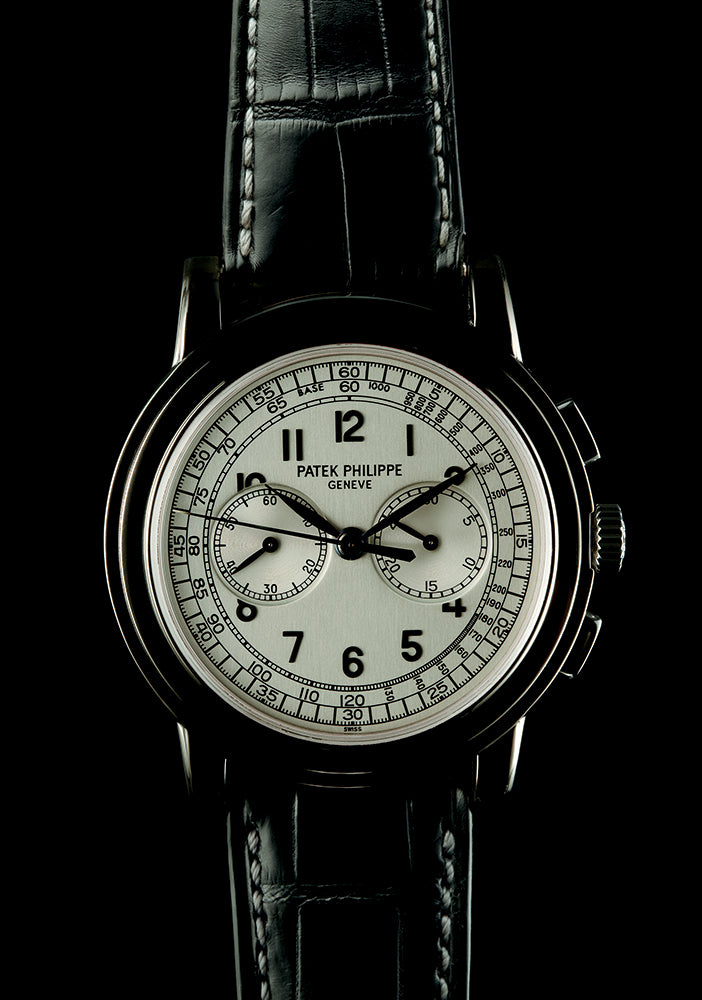
Patek Philippe
PATEK PHILIPPE: AN INVESTMENT ON YOUR WRIST


AN INVESTMENT ON YOUR WRIST. “You never actually own a Patek Philippe. You merely take care of it for the next generation.” These two sentences are at once the famous advertising slogan of the Geneva-based watchmaker, and the de facto guiding principles behind its herculean history in the field of watchmaking. Patek Philippe has been the pre-eminent watch manufacture in the world for the better part of a century, and if today’s market is any indication of how the brand will be perceived in the future, complicated Patek watches from the 20th century might just be the safest investment you can make, above art, automobiles, real estate, and securities.
THE POLISH YEARS. Before Jean-Adrian Philippe joined, Polish military officer Antoine Norbert de Patek shared the company with a fellow Pollack named Czapek, and the two originally plotted to make Patek & Czapek the “national manufacture” of Poland. They intended to move the company to Warsaw as soon as the political climate stabilized in their mother country, but for the first five years of existence, the company catered solely to the Polish aristocracy, despite its Swiss footprint. By 1845, Czapek had left the firm due to numerous disagreements, and took the majority of their Polish clients.


“You never actually own a Patek Philippe. You merely take care of it for the next generation.”
ENTER PHILIPPE. Antoine Norber de Patek met Jean-Adrien Philippe in 1845 in Paris at the French Industrial Exposition. Philippe was exhibiting a new patent for a keyless stem winding and setting system that was a vast improvement on the existing two-part system, and quickly caught the attention of many watchmakers. Upon seeing this, Patek asked Philippe to join the company and the two remained partners until Philippe’s death fifty years later. It was Philippe’s tenure at the helm of the company’s technical developments that put Patek, Philippe & Cie (as it was first founded)at the top of the horological hierarchy. By the turn of the century, the global press often referred to Patek as the manufacturer of “the finest watches in the world.”
A COMPLICATED RACE OF ARMS. During the early 20th century many watchmakers were relegated to making military watches. But, thanks to a personal rivalry between two particularly wealthy American collectors — NY Banker Henry Graves Jr., and James Ward Packard, of Packard Automobiles – Patek Philippe was able to continue developing its repertoire of complications. The two moguls, obsessed with complicated watches single-handedly kept Patek Philippe afloat during the most trying years of its history with massive, all-cash orders. Packard alone ordered fourteen completely bespoke Patek Philippes, while Graves owned more than fifty. The most famous of these orders came from Henry Graves in the form a challenge – to build the most complicated watch on earth — and over the course of seven years, Patek Philippe built the Graves “Supercomplication” which consisted of over 900 parts and 24 complications. The enormous pocketwatch cost Graves 60,000 Swiss Francs in 1933, and later sold in 1999 for over $11,000,000 at Sotheby’s New York.


THE WRISTWATCH, BY PATEK PHILIPPE. While Graves and Packard strove to own the finest watches in the world, the majority of watch-buyers were smitten with a new type of timekeeper – the wristwatch. By the middle of the 1920s, Patek Philippe began to see the possibilities with this new smaller type of watch, and were the first manufacture of haute horlogerie to attempt to scale down their most masterful works into wristwatch size. In 1925 they created the world’s first perpetual calendar wristwatch, and were also the first to house a split-seconds chronograph in the smaller case of a wristwatch. Patek’s early foray’s into complicated wristwatches further supplanted the company as the leading manufacture, and would come to define the brand over the next 80 years.
THE WATCHES THAT MATTER. Perpetual calendar chronographs are the most iconic of Patek Philippe’s wristwatches. The 35mm 1518, followed by the 2499 in a larger 38mm case, was then replaced by the 3970 in 1986, and then the 5970, and finally in 2011 by the 5270 and represent the strongest lineage of any family of timepieces on the planet. For example, the average yellow gold 2499 sells at auction for over $300,000 – the same goes for 1518s. 3970s and 5970s, while generations younger, can also sell well into six figures, giving them the strongest investment and resale value in the world.
“In fact, Patek Philippe alone has all of the top ten records for most valuable wristwatches sold at public auction”
In fact, Patek Philippe alone has all of the top ten records for most valuable wristwatches sold at public auction, with the Henry Graves Supercomplication firmly in first place. But, even outside the ten most valuable watches in the world, it is now commonplace for a handful of Patek Philippe wristwatches to sell for over $1 million each auction season. In fact, this past November, Christie’s Geneva alone had five Patek Philippes break seven figures – including a platinum 2499 that sold for $3.65 million and an observatory wristwatch that sold for over $4 million.
In 1989, Antiquorum’s The Art of Patek Philippe sale set countless records, and changed the dynamics of second-hand pricing for Patek Philippe – but only Patek Philippes. All of a sudden, it became normal for complicated and rare Pateks to sell for several times their original retail prices. In some cases, these strong auction results were aided by the fact that the Patek Philippe museum itself was bidding on the pieces. But, the sale proved that nobody manages brand image better than Patek Philippe. The proof of the true value of a complicated Patek Philippe is seen over the course of generations.




